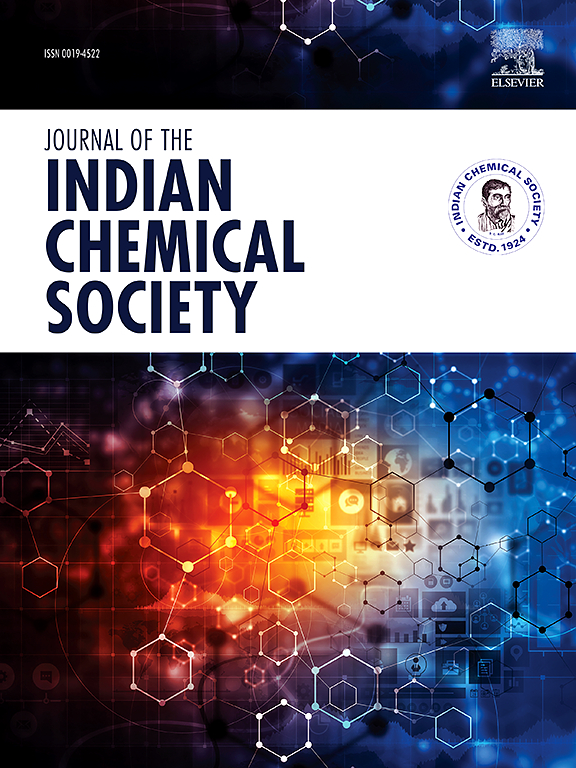Grind-assisted synthesis of W(VI), Cr(VI), and Fe(III) - Schiff base Complexes: Characterization, DFT insights and catalytic activities towards oxidation of benzyl alcohol, methylphenylsulfide and thiophene
IF 3.2
4区 化学
Q2 CHEMISTRY, MULTIDISCIPLINARY
引用次数: 0
Abstract
In the present work, we are reporting the synthesis of two Schiff base ligands and their metal complexes of W(VI), Cr(VI), and Fe(III) by grinding as well as conventional methods. In grinding method, a mortar and pastel were used. We have compared the results of both methods and found the superiority of the grinding method in terms of reaction time and yield. Each of the compounds were well characterized by elemental analysis, melting point determination, FTIR and 1H NMR studies. Theoretical calculations were performed for all the synthesized compounds by DFT studies, and the optimized molecular geometries showed a six-fold coordination in the ligand environment. The calculated reactivity parameters such as HOMO-LUMO gap (Egap), μ, S, η, ω, χ, etc. agree with the experimental reactivity. Further, the complexes were studied for their catalytic activity towards oxidation of benzyl alcohol, methylphenylsulfide and thiophene under conventional as well as grinding method. Each of the compound catalytically and selectively oxidized each of the substrates with good yield and high purity. The complex L1Cr showed the highest activity. We have also proposed a reaction mechanism for the catalytic activity.

W(VI)、Cr(VI)和Fe(III) -希夫碱配合物的研磨辅助合成:表征、DFT见解和对苯甲醇、甲基苯基硫醚和噻吩氧化的催化活性
在目前的工作中,我们报道了两种希夫碱配体及其金属配合物W(VI), Cr(VI)和Fe(III)的研磨和常规方法的合成。在研磨法中,使用灰浆和粉剂。我们对两种方法的结果进行了比较,发现研磨法在反应时间和收率方面具有优势。通过元素分析、熔点测定、FTIR和1H NMR研究对每一种化合物进行了很好的表征。通过DFT研究对合成的所有化合物进行理论计算,优化后的分子几何结构在配体环境中表现出六重配位。计算得到的HOMO-LUMO间隙(Egap)、μ、S、η、ω、χ等反应性参数与实验反应性基本一致。进一步研究了该配合物在常规和研磨法下对苯甲醇、甲基苯硫醚和噻吩氧化的催化活性。每种化合物都能催化和选择性氧化每种底物,收率高,纯度高。配合物L1Cr活性最高。我们还提出了催化活性的反应机理。
本文章由计算机程序翻译,如有差异,请以英文原文为准。
求助全文
约1分钟内获得全文
求助全文
来源期刊
CiteScore
3.50
自引率
7.70%
发文量
492
审稿时长
3-8 weeks
期刊介绍:
The Journal of the Indian Chemical Society publishes original, fundamental, theorical, experimental research work of highest quality in all areas of chemistry, biochemistry, medicinal chemistry, electrochemistry, agrochemistry, chemical engineering and technology, food chemistry, environmental chemistry, etc.

 求助内容:
求助内容: 应助结果提醒方式:
应助结果提醒方式:


